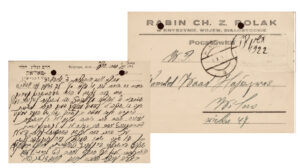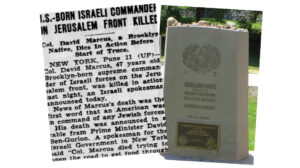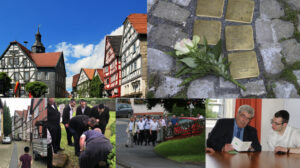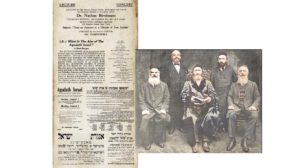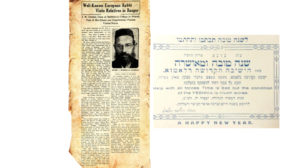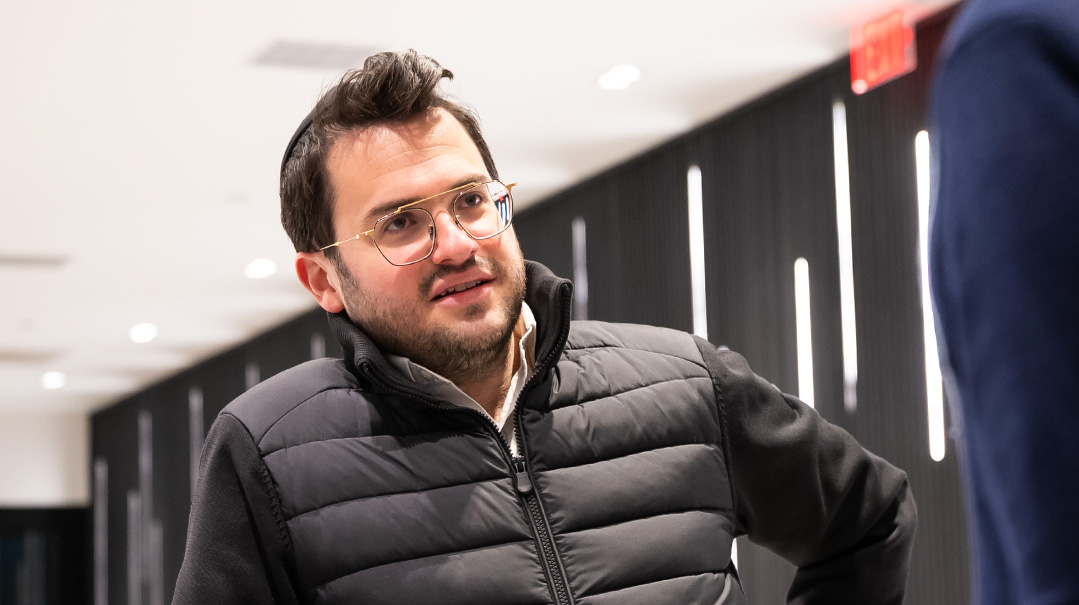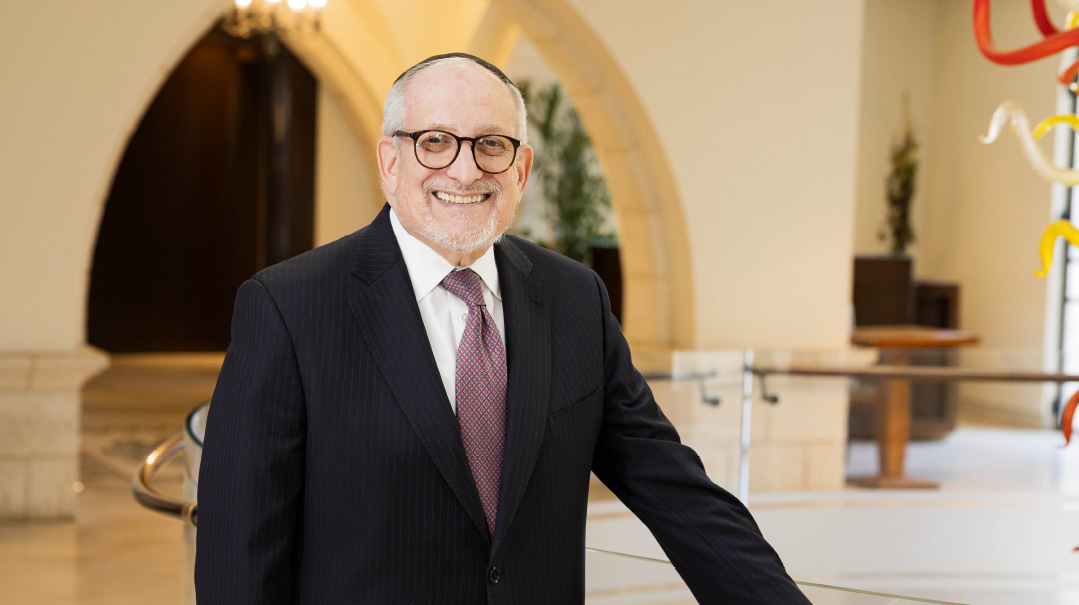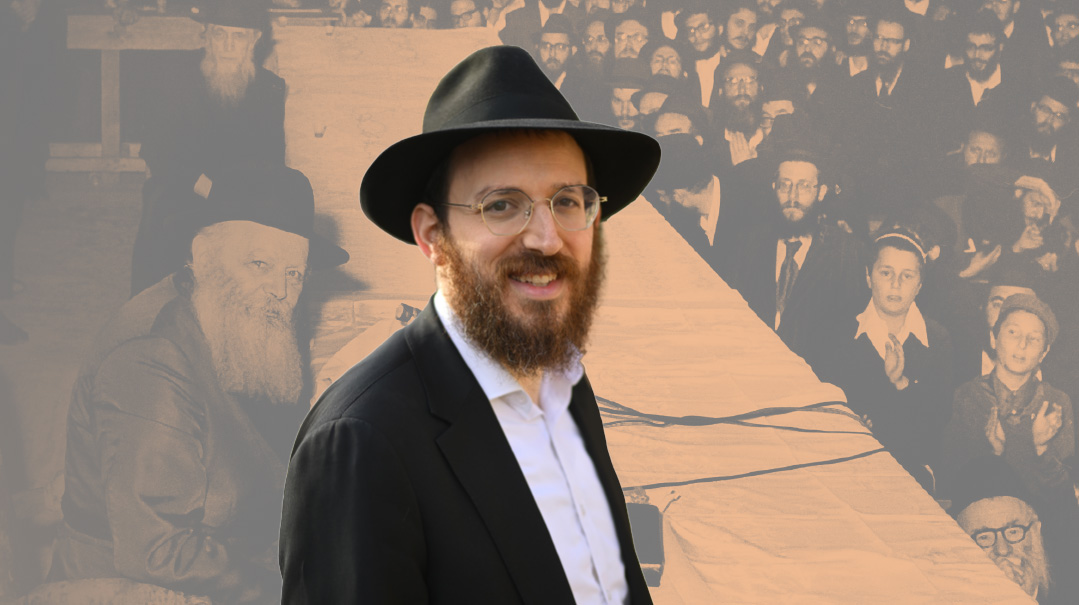No Caving In

Dr. Gershon Bar-Kochva chisels away at history in Chevron
BONUS! Videos throughout the article
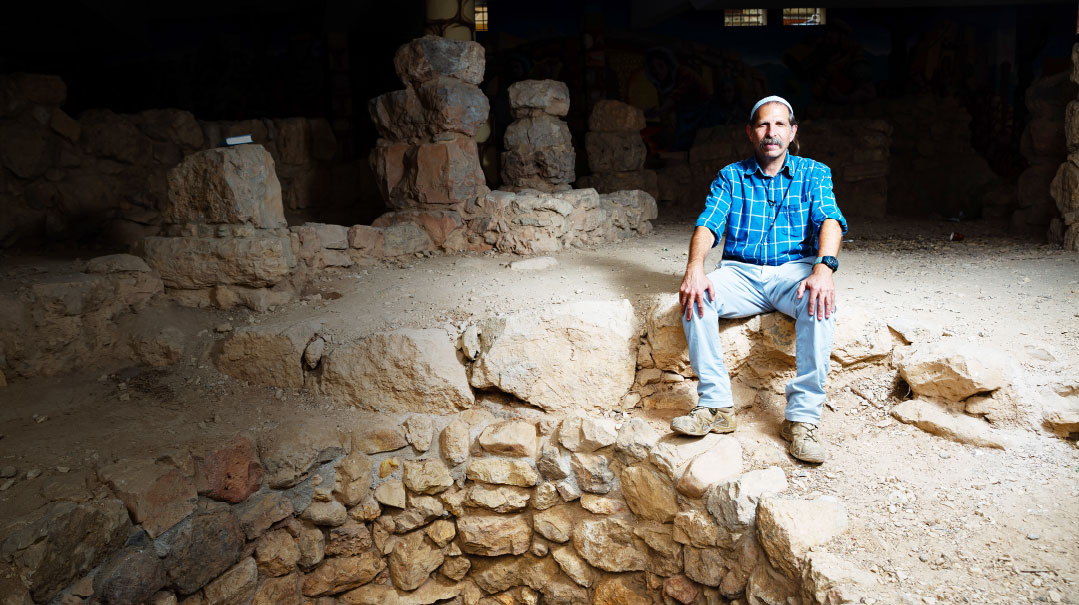
Photos: Elchanan Kotler | Video: SC Media Productions
W
hen a secular Israeli archaeologist was literally moved to tears during a tour by Dr. Gershon Bar-Kochva a few years ago,
Chevron resident and veteran historian Dr. Gershon Bar-Kochva came face to face with the transformative power of the Mearas Hamachpeilah.
“It was a Chol Hamoed Pesach, there were thousands of people davening all around, but this researcher from Jerusalem was just there to see our latest findings,” says the researcher and archaeologist. “We began the tour, pointing out the massive structure built by King Herod and the subsequent building during the Crusaders and the Mameluke period, but when we stopped next to Ulam Yaakov — the hall above where Yaakov Avinu is buried — I saw I’d lost his attention. He wasn’t with me anymore. Looking around, this secular man suddenly started to cry, saying to himself, “If my savta would know where I am now!”
It’s the middle of Israel’s second coronavirus lockdown. Mask-wearing soldiers guard the largely empty building, and the torrent of visitors passionately saying Tehillim has been reduced to a trickle, but I’m admitted to Mearas Hamachpeilah with a guide no one argues with. Dr. Gershon Bar-Kochva’s handlebar moustache and flowing peyos are evidence of the eclectic influences on his life. The slight, youthful build is testament to five decades spent climbing into IDF tanks as well as straddling the ruins of ancient Chevron, peeling back the layers of the holy city’s history to reveal groundbreaking findings.
“Do you know where Avraham Avinu lived? We know from the Chumash that it was in Elonei Mamrei, but the question is, where is that exactly? I belive it’s just over there,” he says, gesturing to the normally full car park just in front of Mearas Hamachpeilah. “The standard claim, including that of the Christians, is that it’s a few miles away by the entrance to the city, but I have proof that they’re wrong, and it was really over here.
“Look at that hilltop there,” he continues, pointing to a sunlit ridge overlooking the depression where Herod’s fortress-like complex lies, known as Tel Roumeida or Admot Yishai, one of the Jewish complexes in the ancient city. “That’s Tel Chevron, where we’ve found the remains of the original city. The massive stone walls that have been excavated lead to a gate — which could be the “sha’ar” where Efron sold Mearas Hamachpeilah to Avraham to bury Sarah Imeinu.”
Bar-Kochva stands on giant’s shoulders; his archaeological predecessors include Sir Charles Wilson — of Wilson’s Arch fame at the Kosel — and the Victorian-era Palestine Exploration Fund. But in today’s Chevron, archaeology is far more than just history: Each Hebrew inscription, every Crusader motif uncovered has geopolitical overtones. With the Muslim Waqf claiming Mearas Hamachpeilah as an Islamic shrine, the painstaking revelation of more and more Jewish history found in the original structures undermines that narrative. And so, the IDF’s Civil Affairs Directorate — anxious to preserve the delicate status quo in Chevron — keeps a watchful eye on Bar-Kochva’s work.
Bar-Kochva admits, however, that even after decades researching Mearas Hamachpeilah, “I can say that we’ve only uncovered about 30 percent of its secrets.”
Wow Moments
Gershon Bar-Kochva’s fierce love of Chevron was actually born far away from the ancient city, in the modern bustle of New York. “My mother came to Israel as a teen in the ’50s, and she decided to stay,” he says, “but when her parents called her to come home to America, she decided to make a fait accompli and get herself drafted to the IDF — that way she’d be unable to leave. They stopped her at the last minute and sent her home to America.”
Meeting a like-minded follower of Jabotinsky’s hawkish Revisionist Zionism, the couple married, and in 1963 Gershon was born. In 1970 they headed back to Israel. Chevron had been liberated three years before, and Gershon’s father, Chaim, made sure to visit Mearas Hamachpeilah — and even photographed the Herodian drainage system that his son would later study.
When the family first moved to Israel, their name was Kessler. But later, when Gershon was drafted into the IDF’s armored corps after studying for a time in Yeshivat Hesder Nir in Kiryat Arba, he discovered something unwelcome about his surname.
“I learned that there was a World War II Luftwaffe general called Ulrich Kessler, and so I decided to change my name,” he says. “And if we were already talking about a military personality, then I wanted to choose Bar-Kochva, whose military leadership in the revolt against Rome I’d felt a connection with.”
Equipped with a new martial name, Gershon Bar-Kochva rose up the ranks to become a lieutenant-colonel. At the same time, he married Shlomit, whose father Moshe Zar is a legendary figure in the settlement movement, responsible for buying large parcels of land in Yehudah and Shomron from Arabs. The young couple settled in Chevron, and Gershon soon decided to probe what lay beneath his hometown.
And that’s how he came to search for the site of Elonei Mamrei. “If you open up a Chumash to Lech Lecha,” he begins, holding a Tanach and falling into the lecture mode that he uses in Midreshet Chevron, “you read of Avraham’s nephew Lot being kidnapped by the four kings, and a messenger coming to tell Avraham ‘who was living in Elonei Mamrei.’
“For 1,500 years,” Bar-Kochva continues, “Jews followed the Christian tradition that identified the place where Avraham lived and invited in the malachim, with a site three kilometers north of Chevron known in Arabic as Ramat el-Khalil, meaning ‘Hill of the Friend,’ referring to Avraham’s closeness to G-d. There are records of Jews praying there in medieval times, but I’ll tell you why that can’t be the place. Chazal tell us that when Avraham went to prepare a meal for his angel-guests, the calf ran away, and Avraham ran after it, finding it by a cave, which turned out to be the burial place of Adam and Chava. Does it make sense that he ran three kilometers after a calf? It’s more logical that he lived near the cave, and that it ran into his backyard.”
Pointing to the ring of hills around Mearas Hamachpeilah, Dr. Bar-Kochva clinches his argument: “Look at the topography. All around here are hills. Where are the ‘plains of Mamrei?’ The car park in front of the Mearas Hamachpeilah is the only naturally flat area within distance. We think that the place where the buses and cars park when people come to visit is actually where Avraham and Sarah lived.”
Although inconclusive from a mesorah or archaeological point of view, it’s a dramatic claim. And with that peroration ringing in my ears, Dr. Bar-Kochva turns to the policemen manning the turnstile security barrier leading up to Mearas Hamachpeilah.
Oops! We could not locate your form.
